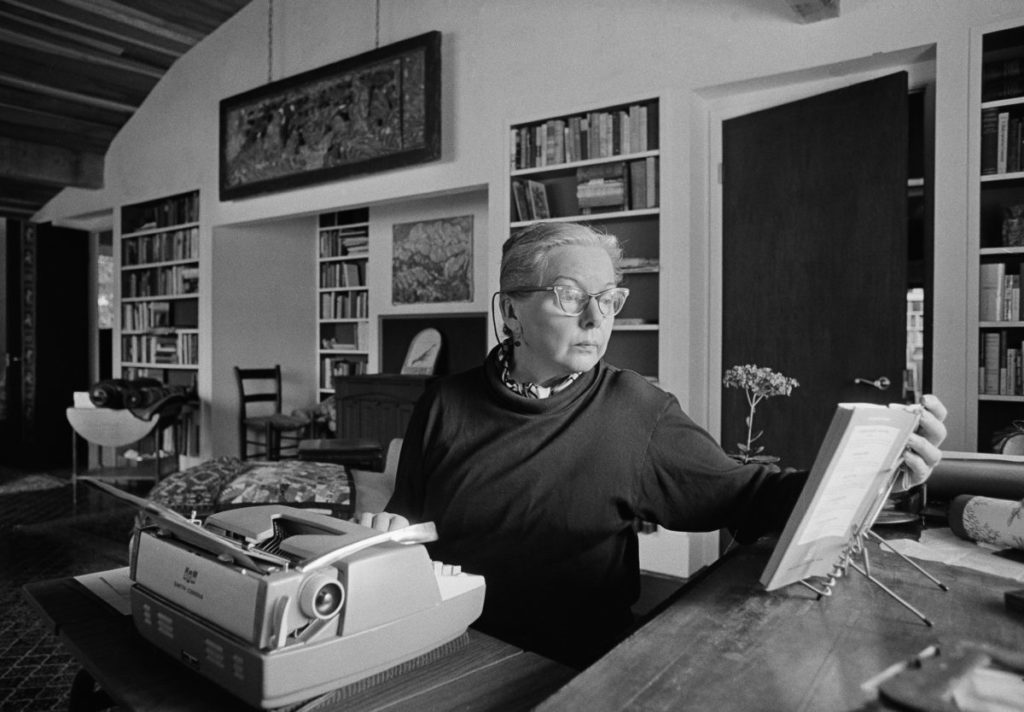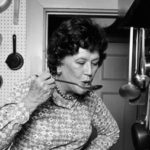
Today, the landscape of food writing is deeply personal. Delve into your newspaper’s food section, or pick up any culinary magazine or book, and you will find that the author’s point of view is present in the story being told. Think Julie Powell documenting her ferocious efforts to cook every classic Julia Child recipe in Julie and Julia: My Year of Cooking Dangerously. Or Anthony Bourdain disclosing sordid restaurant secrets in Kitchen Confidential.
But that’s not how people always wrote about food. It wasn’t until Mary Frances Kennedy Fisher, also known as MFK Fisher, began publishing books and essays in the 1930s that this style of writing – less traditional cookbook, more food memoir – became popular. And for many decades, she dominated the nascent field, churning out classics like The Gastronomical Me and How to Cook a Wolf, and publishing hundreds of stories for The New Yorker. When she died in 1992, the New York Times noted in her obituary that she often “used food as a cultural metaphor,” creating a genre in the process.
During her 60-year career, Fisher also translated French gastronome Jean-Anthelme Brillat Savarin’s renowned 1825 book, The Physiology of Taste, into English (giving us English speakers the famed quote, “Tell me what you eat, and I will tell you who you are”). That quote might best describe how Fisher approached food writing.
While other authors limited their writing to ingredient lists or cooking instructions, Fisher led readers on a journey, sharing her musings on life, love and good food. As she bounced back and forth between Europe and the United States, she wrote about the food encountered in these places – the meals consumed with friends, the dishes enjoyed in moments of joy or in times of deep sorrow. The result is a lifetime of work that illuminates the food culture of each decade of the 20th century and tells stories of the lives lived during World Wars, the Great Depression, the 1960s, and all the way up to the final years of the millennium.
Fisher was born in Michigan in 1908 but grew up in California, where she met future first husband, Alfred. They moved to Dijon, France, in the early 1930s so Alfred could study at the university there, and Fisher found herself a lonely young housewife abroad in Europe. Like Julia Child, Fisher dove head first into French cooking – learning about local produce, recipes and the art of eating well. (In fact, an anthology of her work is titled The Art of Eating.)
The Gastronomical Me recounts these years, but not in any Eat, Pray, Love kind of way. Fisher’s prose has a darkness to it. She was not afraid to break the mold established by conventional female food writers like Isabella Beeton, who put forth into the world neat and tidy portraits of domestic bliss, or delicious meals. Fisher wrote:
“We ate terrines of pâté ten years old under their tight crusts of mildewed fat. We addled our palates with snipes hung so long they fell from their hooks, to be roasted then on cushions of toast softened with the paste of their rotted innards and fine brandy.”
Fisher’s words reveal the unglamorous gore of animal eating, the ugliness of food and perhaps the emotional state of its eaters. In How to Cook a Wolf, as World War II raged in Europe, descriptions of pâté and fine brandy had given way to a sort of survival guide. Fisher advised on war time cooking,
“Use as many fresh things as you can, always, and then trust to luck and your blackout cupboard and what you have decided, inside yourself, about the dignity of man.”
Her marriage to Alfred disintegrated in 1937, and she quickly fell in love with a friend of theirs, Dillwyn Parrish. They married a year later and made their home in California’s San Jacinto Mountains. But Parrish’s battle with Buerger’s disease, which left him in chronic pain, proved too much to bear. In 1941, Parrish shot himself. In Fisher’s third book, Consider the Oyster, published a short time after, she describes the consumption of the mollusk, “Its chilly, delicate grey body slips into a stewpan or under a broiler or alive down a red throat, and it is done.” The finality of the oyster’s fate echoes feelings she might have had about her husband’s life and how it all might end.
Fisher’s long and illustrious career would continue right up until her death in 1992. She was hired in 1966 by Time-Life Magazine to write her first “official” cookbook, The Cooking of Provincial France, which brought her back to France for research. In the final decades of her life she churned out a new work every few years, demonstrating an extraordinary capacity as a writer, but also a lover of food.
The next time you read an article or essay about food – or even a food memoir – remember as you come to know the author, their life, and their reflections on whatever culinary culture they may be writing about, that this story sits in front of you, in large part, because of MFK Fisher. ◼
Victoria Flexer, author of “A History of the World in Ten Dinners,” received her master’s degree in historical studies from The New School. She specializes in sharing history through food, art and culture.


